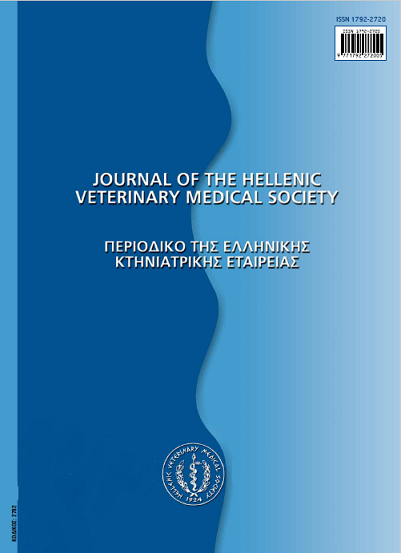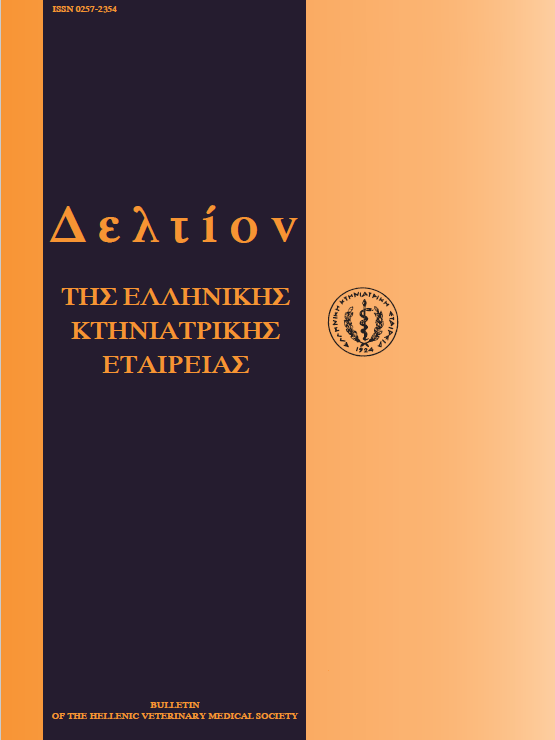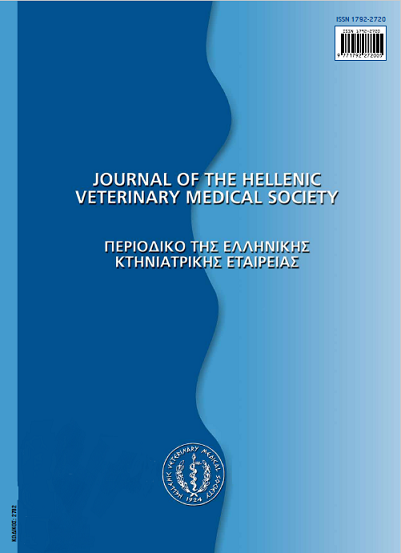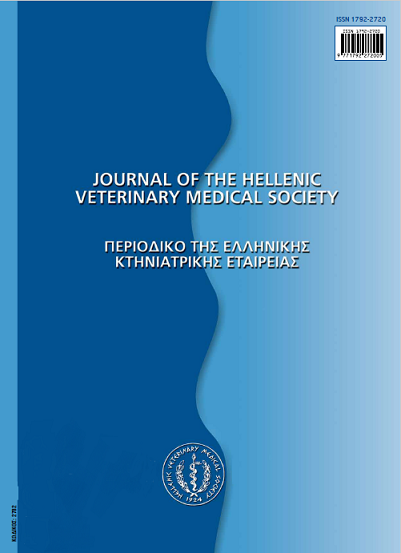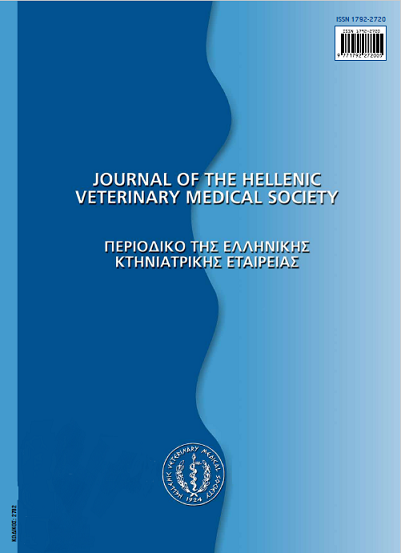Feline atopic dermatitis
Abstract
Atopy is a highly pruritic skin disease in cats that have positive intradermal test reactions mostly to non - seasonal allergens (house dust mites). It's pathogenesis is unknown, though it is believed that a reaginic antibody exists resemblin IgE. Young cats appear to be predisposed. The most consistent feature of the disease is pruritus, heralding its clinical picture. The four most commonly occurring cutaneous reaction patterns are military dermatitis, eosinophilic granuloma complex lesions, selfinduced alopecia or hypotrichosis and lesionai or nonlesional pruritus of the face, neck and pinnae. The definitive diagnosis of feline atopy requires a positive intradermal allergy test reaction, good flea control, a poor response to a 9 to 13 -week course of a hypoallergenic diet and negative fungal cultures plus skin scrapings for pathogenic mites. The treatment plan may include avoidance of allergens, glucocortidoids (repositol methylprednisolon, dexamethason), ω/3 - ω/6 fatty acid supplements, antihistamines (chlopheniramine, clemastine) and/or mast cell stabilizers (oxatomide) and hyposensitization.
Article Details
- How to Cite
-
KOUTINAS (Α.Φ. ΚΟΥΤΙΝΑΣ) A. F., & SARIDOMICHELAKIS (Μ.Ν. ΣΑΡΙΔΟΜΙΧΕΛΑΚΗΣ) M. N. (2018). Feline atopic dermatitis. Journal of the Hellenic Veterinary Medical Society, 48(1), 17–23. https://doi.org/10.12681/jhvms.15789
- Issue
- Vol. 48 No. 1 (1997)
- Section
- Review Articles

This work is licensed under a Creative Commons Attribution-NonCommercial 4.0 International License.
Authors who publish with this journal agree to the following terms:
· Authors retain copyright and grant the journal right of first publication with the work simultaneously licensed under a Creative Commons Attribution Non-Commercial License that allows others to share the work with an acknowledgement of the work's authorship and initial publication in this journal.
· Authors are able to enter into separate, additional contractual arrangements for the non-exclusive distribution of the journal's published version of the work (e.g. post it to an institutional repository or publish it in a book), with an acknowledgement of its initial publication in this journal.
· Authors are permitted and encouraged to post their work online (preferably in institutional repositories or on their website) prior to and during the submission process, as it can lead to productive exchanges, as well as earlier and greater citation of published work.




